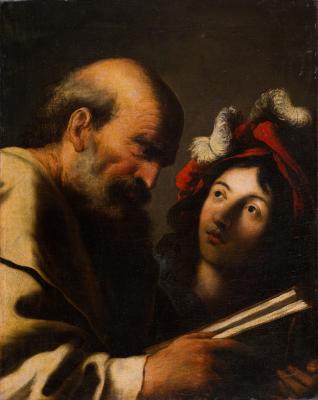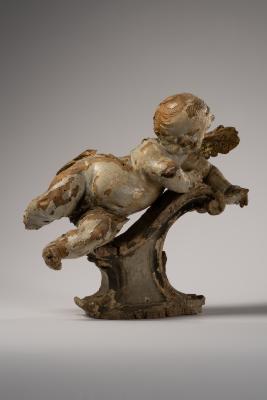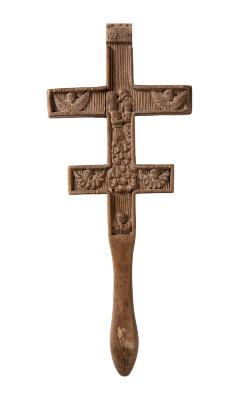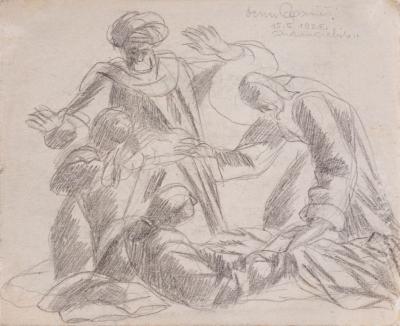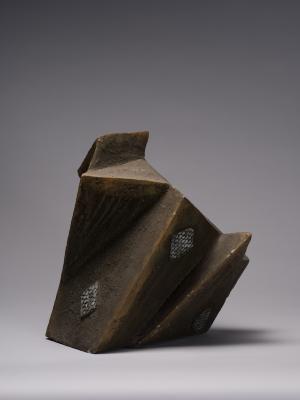It is a unique version of B. Pinelli's "Beggar's Family" composition. Unlike all other known variants, where a passerby is walking uninterestedly by a woman who is covering her head with a cloth and begging people to help her child, in this composition, a rich man, covered with the drapery of a blue coat, is outstretching his hand and giving a coin to a needy family. The work Famiglia indigente was first performed by Pinelli in 1815; then, the author repeated it unchanged in 1816. The third version of the engraving was published in the album Pittoreskes Italien in Leipzig in 1840. On that engraving, a man stood before a cloth-covered woman with three children; it was unclear what his following actions would be. In the Lviv version of the composition, a passerby is depicted giving alms. The main character is a cute child sleeping peacefully, lying on a crumpled bedding on the pavement. A red spot of the bedding accentuates the plump figure of the child. The action takes place in the evening street of an empty city. The tension is created by dimmed watercolour tones and the black emptiness of window openings. The work is generally dominated by a sentimental mood typical of early Romanticism.












